Four glances at the sky Single Piece
Composer:Vytautas Miškinis
Words from composer
In the first part of the cycle “Four glances at the sky”, the melody “Who has seen the wind?” is sung by the middle voice.
Other voices accompany him, as if they echo the principle of answers. Nevertheless, both the first and third voices are presented melodically, they do not perform the function of a harmonic accompaniment.
In the second part, “Eternity”, I combine three voices singing idioms, as if sequential imitations with places are applied with homophonic texture, performing a purely harmonic function.
In the accompaniment, I do not duplicate the lines of the chorus, giving it an independent function.
In the third part “On a starlit night ” – I refused the accompaniment. In the cycle, the a cappella part adds new colors. I tried to give linearity to each voice. In the part Piu mosso, I use the Lithuanian folk singing method – SUTARTINE. It is a polyrhythmic and polyphonic way of singing based on the canon principle. Here, the first two voices
interweave according to the principle of the canon, while the lower ones seem to imitate the sound of the Lithuanian folk wind instruments SKUDUČIAI. It is similar to the sounds produced by pan flute or bamboo flute. From bar 13, the voicing function reverses. The upper ones imitate the instruments and the lower ones sing the melody. At the end of the piece, I return to the original situation. This is a short recap.
The first three parts are written in English original texts, and the fourth part “O lux” is in Latin. It gives a new color to the sound of the choir. And the text attributed to Saint Ambrose speaks of the eternity of the light of life. This idea crowns the meaning of the whole cycle – everything that happens in heaven is a consequence of the eternal light of the Heavenly God.
In the beginning, the upper voices perform a harmonic function. The melody is given to the lower voice. In the middle part, the melody is given to the middle voice. Only at the end upper voices take over the melodic line, others accompany him.
The final A major chord is a triad directed to Eternity.
I believe that performing the cycle gives each choral voice the opportunity to express itself to the maximum.
You can buy Full version here
Printed score and digital score are prepared. Please choose one below.
Composer: Vytautas Miškinis
Related products
-
Our Forest
¥820 / ¥880 Select options This product has multiple variants. The options may be chosen on the product page -
Violet-colored Lullaby
¥610 / ¥660 Select options This product has multiple variants. The options may be chosen on the product page

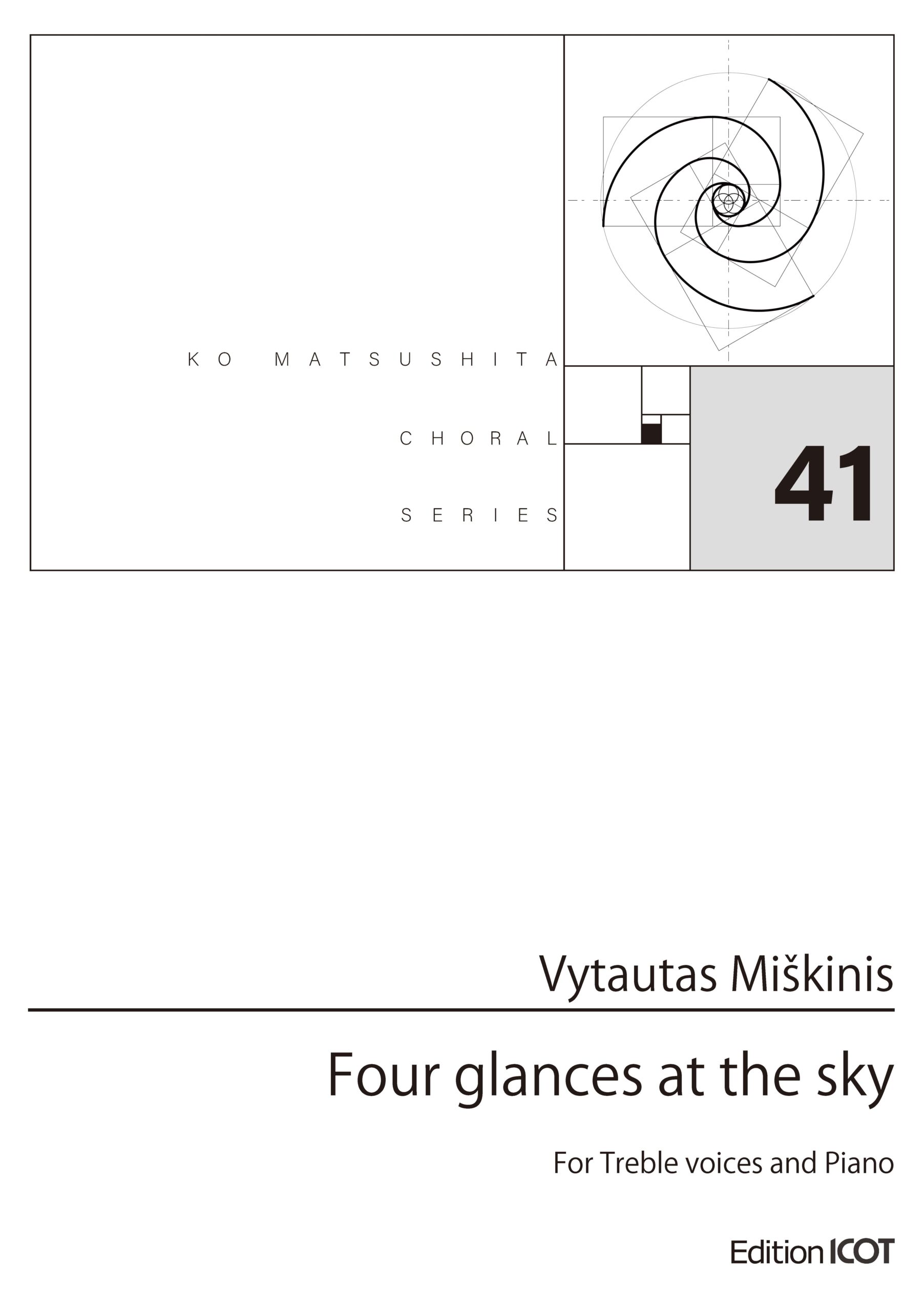
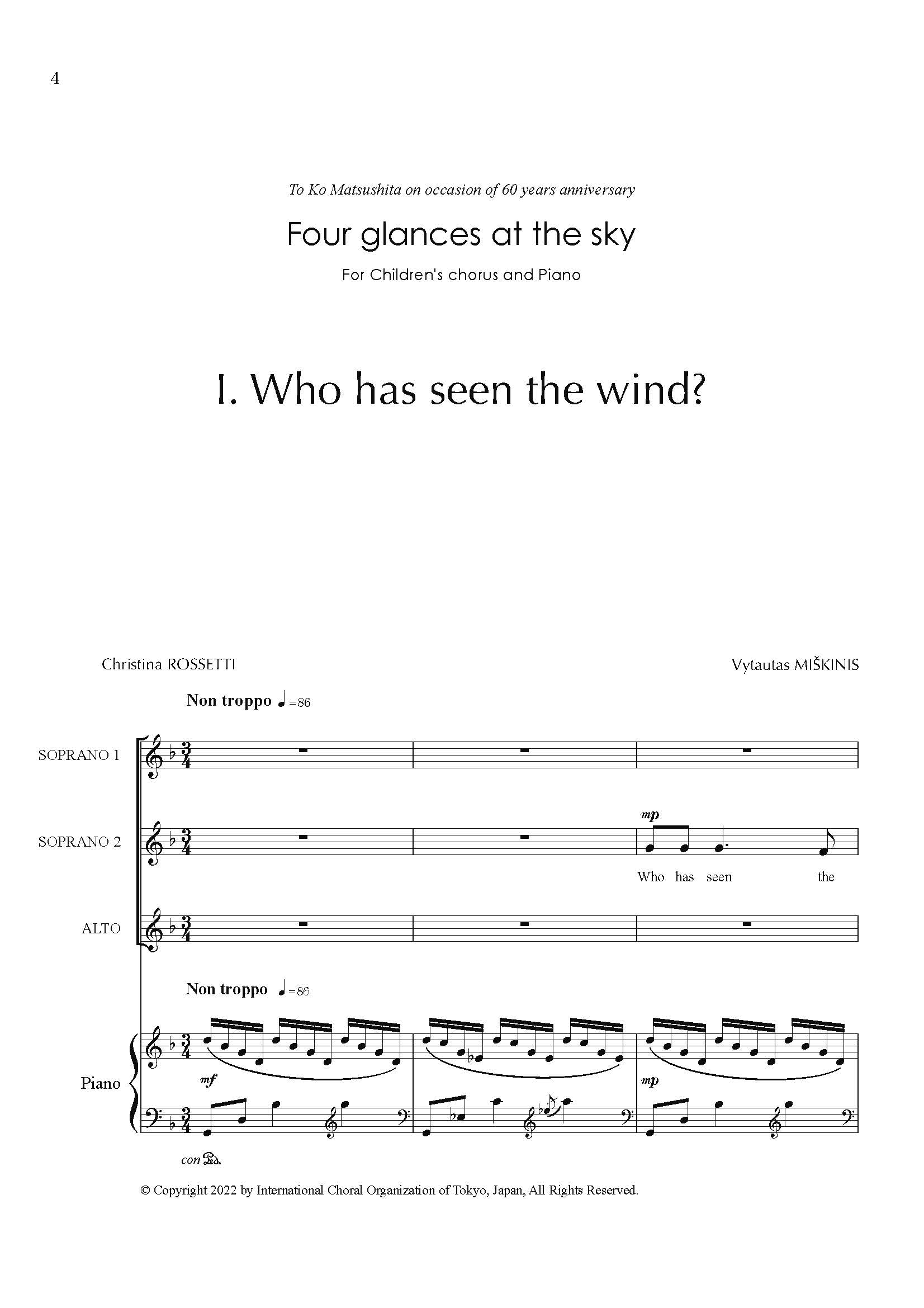
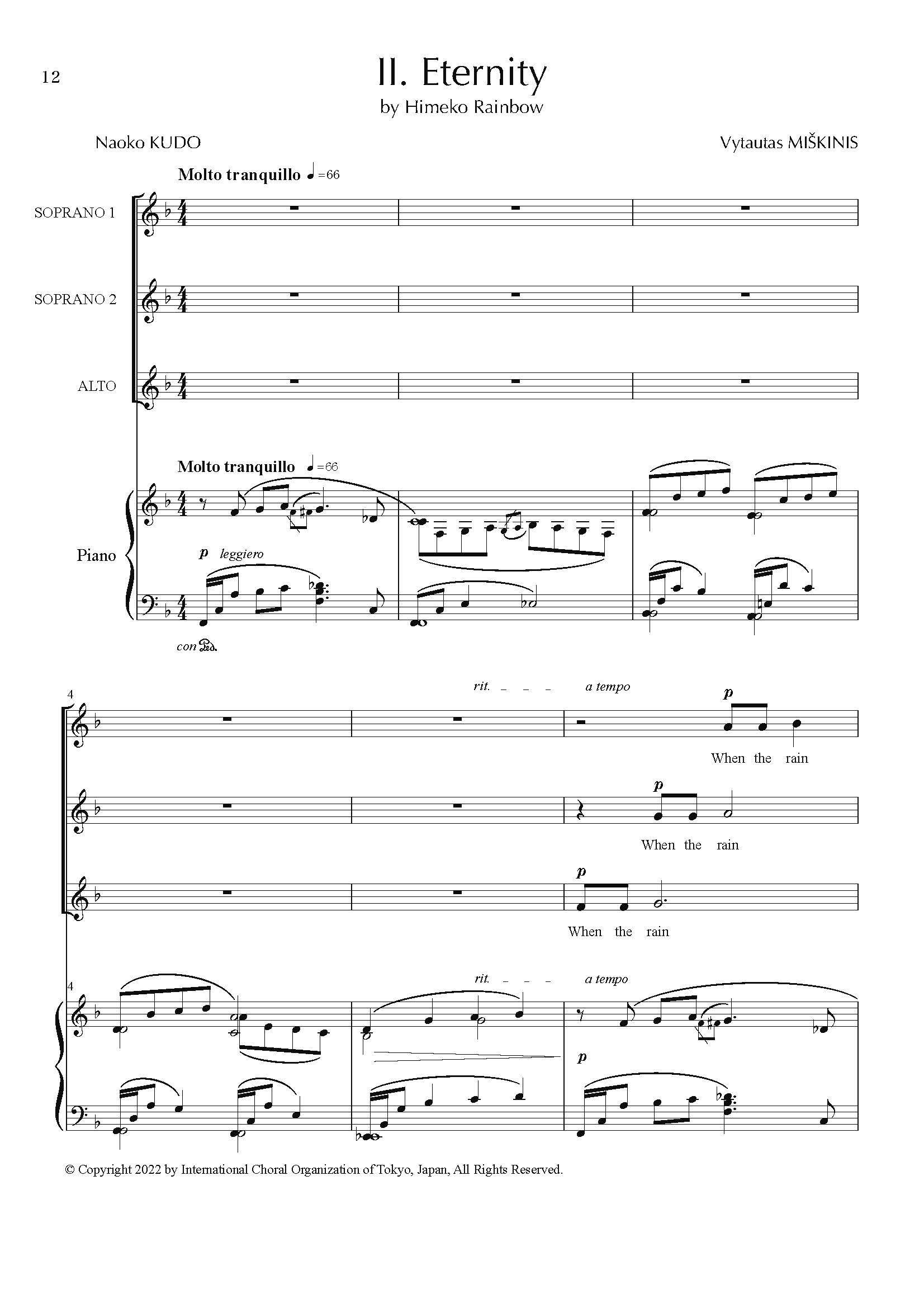
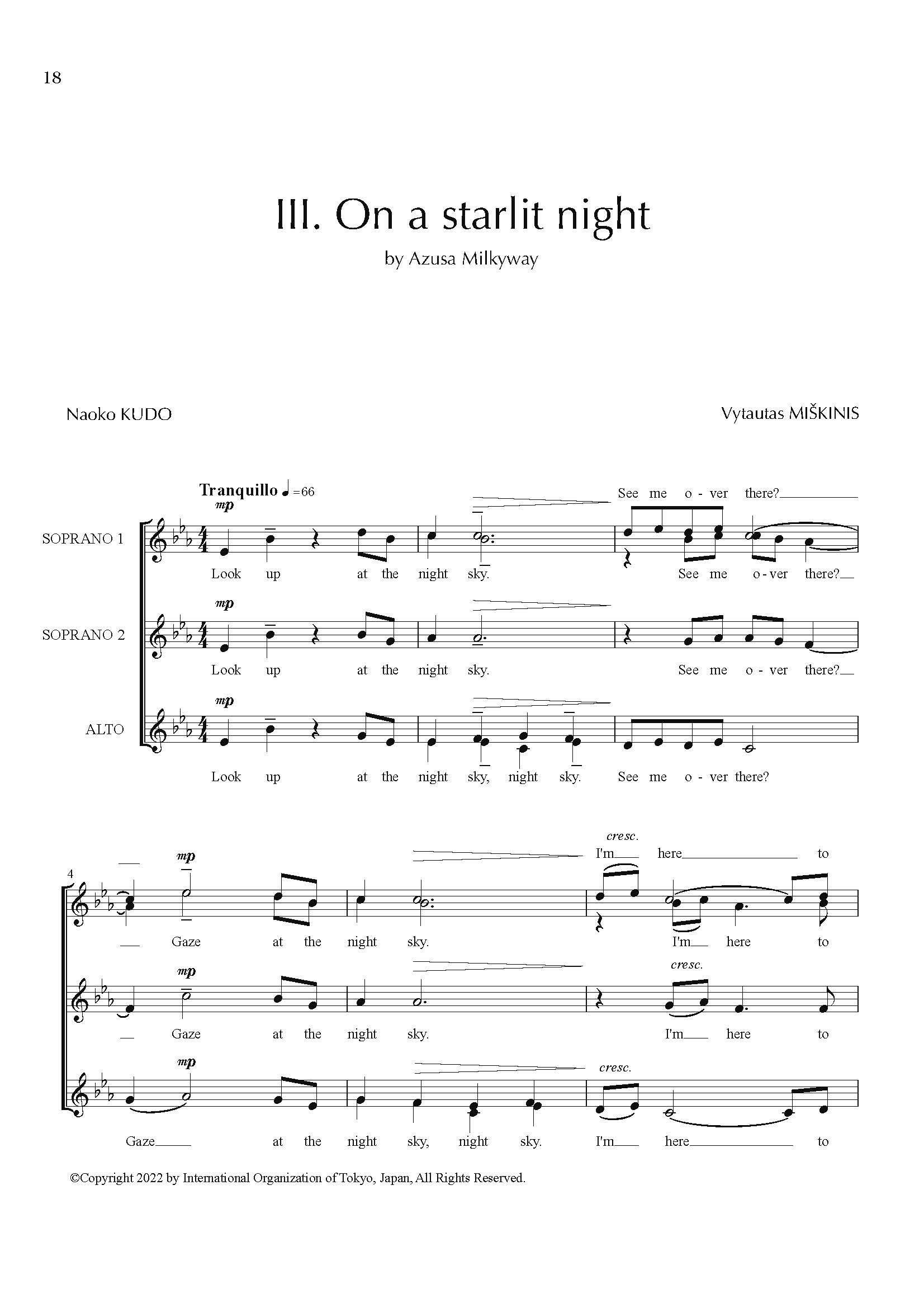
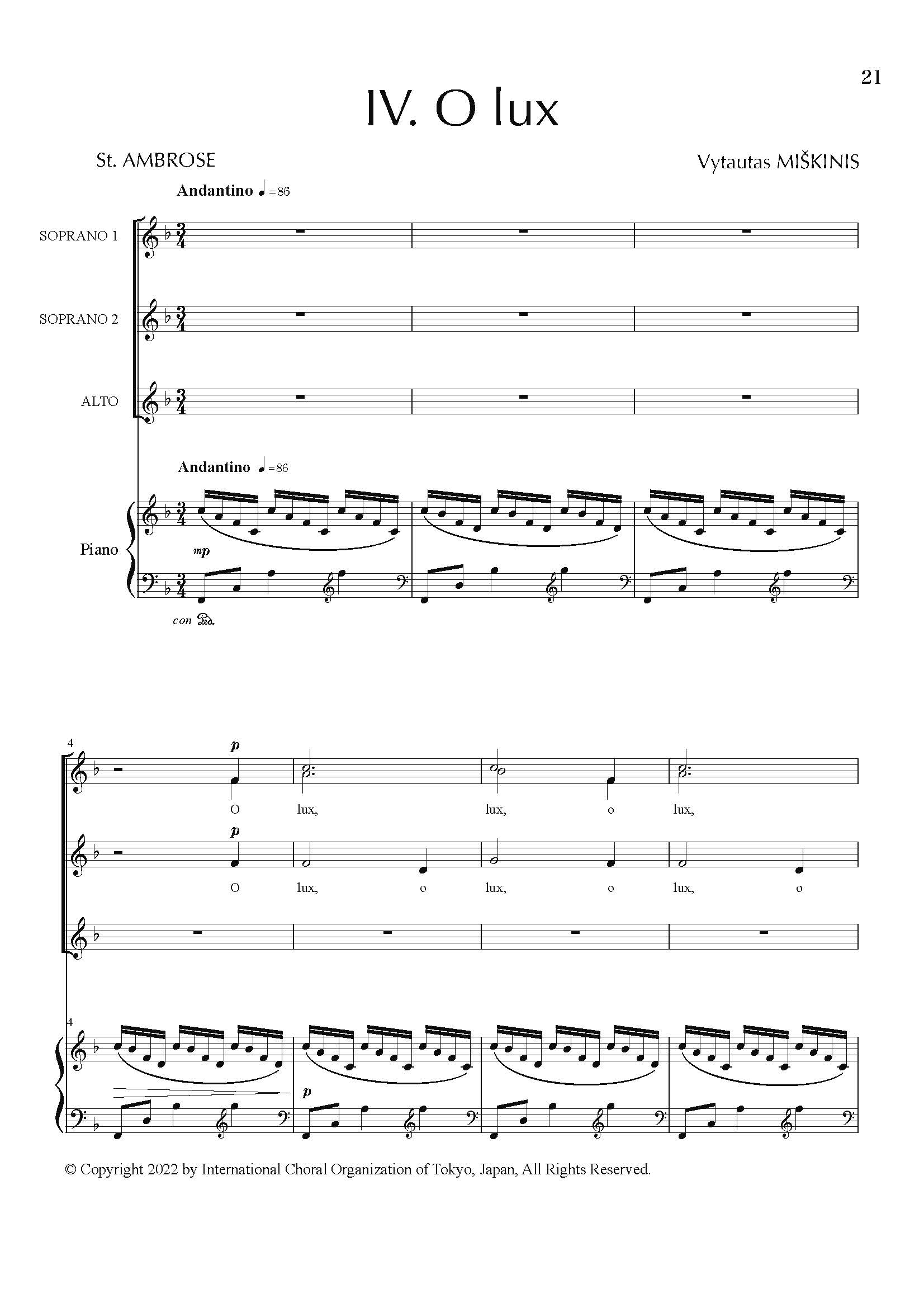
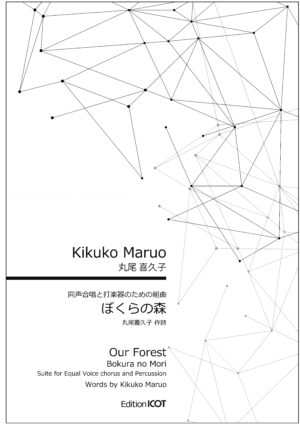
決定デザイン-表1-300x424.jpg)